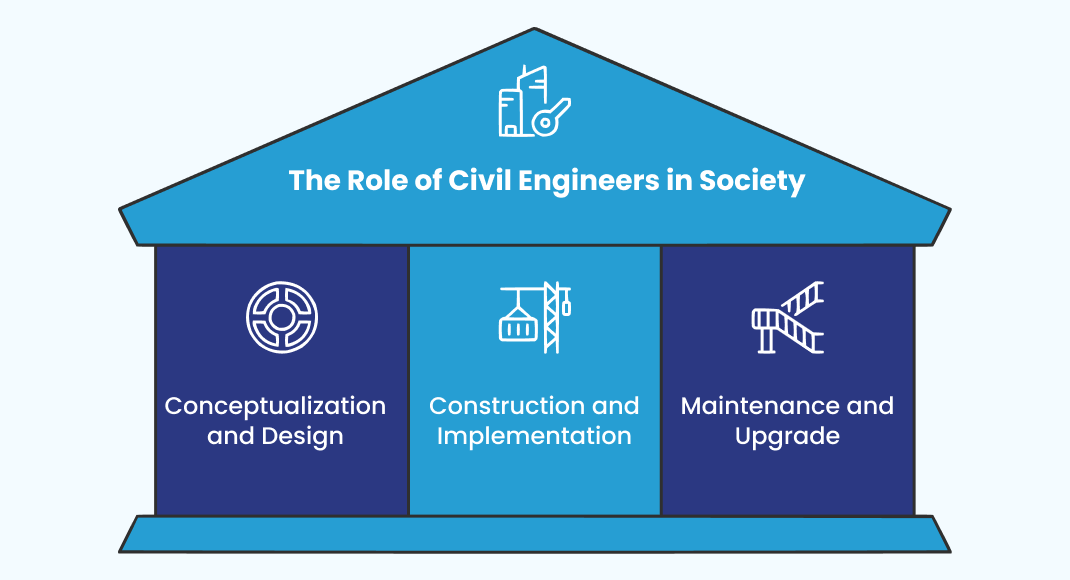Unveiling the World of BTech in Civil Engineering
Specializations in MTech Programs
Career Prospects After Completing MTech
Advanced Studies and Research Opportunities
Choosing the Right MTech Program

Are you fascinated by the art of construction and the science behind building structures? If so, a B. Tech in Civil Engineering might just be the perfect choice for you.
Civil engineering is a field that deals with the design, development, and maintenance of infrastructure projects such as bridges, roads, buildings, and dams. It is a highly rewarding profession in terms of job opportunities, and it also plays a vital role in the development of society. According to construction placement, demand for civil engineers is projected to expand by about 9 percent per year throughout 2018-2028.
For those who are considering pursuing a B. Tech degree in civil engineering, MIT AOE will unveil the world of civil engineering and talk about career opportunities, challenges, and other aspects through this blog.
The Evolution of Civil Engineering Education
Civil engineering education has come a long way from ancient times. The pyramids and the Hanging Gardens were great structures built in ancient civilizations like Egypt and Babylon. During the Middle Ages, civil engineers constructed castles, fortifications, roads, and bridges for protection and communication. The development of new materials and technology during the Industrial Revolution resulted in the construction of railways and factories.
Modern civil engineering is now focused on
- Sustainable and modern designs
- Using computer software
- Advanced materials for safer
- More efficient structures
The Role of Civil Engineers in Society

Civil engineers are crucial for modern society as they create an important infrastructure for economic development and people’s welfare. From roads, and bridges to airports which boost businesses and economies. They are also vital for public safety ensuring buildings and bridges are strong so that they do not collapse and cause accidents. Civil engineers are also making sure to protect societies from natural calamities like floods and hurricanes. The best colleges for civil engineering in India equip students to contribute to these impactful aspects of society. Some of the roles include:
- Conceptualization and Design: Civil engineers make use of CAD software in the generation of drawings, and 2D and 3D models of proposed buildings and infrastructures.
- Construction and Implementation: They are essential in construction and implementation, supervising the process itself and checking the designs are implemented properly.
- Maintenance and Upgrade: Civil engineers ensure that the built structures remain functional until tomorrow.
Career Pathways for B. Tech Graduates
After completing a B. Tech in Civil Engineering, the world of opportunities expands for graduates. From specialized courses after civil engineering B. Tech to diverse career paths, the journey post-graduation offers a plethora of options One may take up higher education or go directly to work. A host of opportunities exist on the way ahead, after B. Tech in Civil Engineering. Here are some courses you can consider after your B. Tech in civil engineering:
- MTech/M.Sc. in Civil Engineering: The postgraduate degrees are more advanced in various aspects of civil engineering, thus making graduates pursue research or specialized roles in industry.
- Post Graduate Diploma (PGD) in Civil Engineering: This diploma program specializes in some aspects of civil engineering for immediate use in the job.
- PhD in Civil Engineering: This degree allows graduates to delve into a specific research direction of civil engineering and further advances of the science and opportunities for employment in science and research.
Some of the best career options after B Tech civil engineering include:
- Construction Industry: You can work in construction companies where supervision of buildings, bridges, and other infrastructure occurs.
- Infrastructure Development: This entails coming up with designs and planning for such projects as roads, airports, and the supply of water.
- Environmental Engineering: Encompasses environmental protection and sustainable development issues.
- Transportation Engineering: Includes planning and designing of transport systems, such as roads, highways, and railways.
- Risk Management Specialist: Identify risks in construction and come up with a mitigation strategy.
- Smart Cities Consultants: Smart and sustainable cities could be designed and implemented technologies you could be involved in.
- Energy Consultant: You can further engage in projects centering on energy efficiency and clean sources of energy.
Future Trends in Civil Engineering
Building Information Modelling (BIM): This technology enables engineers to develop digital models of the structures, which enhances cooperation, risk reduction, and accurate 3D mapping before the start of the construction.
Sustainable Materials and Practices: The use of recycled concrete, sustainable steel, and innovative composites in civil engineering is fast growing. These materials help in waste reduction, as well as healthy indoor environments.
Smart Cities and IoT Integration: There are civil engineers who are working on integrating transportation, public services, and utilities to make a connected and data-driven urban environment.
3D Printing in Construction: 3D printing is revolutionizing the construction sector because it speeds up the construction process, minimizes labor and material costs, and allows for precise and accurate construction.
These trends have been identified by MITAO, one of the best civil engineering colleges in India, and adopted the emerging technologies, practices, and techniques by our civil engineering curriculum in consonance with the changing demands in the industry. This prepares the student to face the changing demands of the industry and build a sustainable and smart future in civil engineering.
Choosing the Right B. Tech Program
Selecting the perfect B. Tech courses in civil engineering and college is a pivotal decision that can heavily shape one's future and potential. A carefully chosen program and institution can equip individuals with vital abilities, insights, and avenues for development. As you navigate the myriad of options, keep the following aspects in mind:
- The college’s accreditation and reputation
- Course curriculum and specializations offered.
- Faculty expertise and qualifications
- Research facilities and infrastructure
- Placement and internship opportunities
- Alumni network and industry connections
- Campus culture and student life
- Location and accessibility
- Affordability and financial aid options
- Overall college ranking and reviews.
Conclusion
To wrap up, the field of civil engineering presents a plethora of opportunities and is a highly recommended path for aspiring professionals in our constantly advancing society. With the responsibility of creating complex structures and finding sustainable solutions, civil engineers are truly shaping the future.
If you are searching for a top-notch civil engineering college in Pune, MIT AOE should be at the top of your list. Renowned for its excellence, our institution offers a variety of B. Tech programs, including Civil Engineering. Kickstart your journey towards a fulfilling career in civil engineering by enrolling in MIT AOE today. For more details and to apply, make sure to visit our website now!
OUR RECENT BLOG



